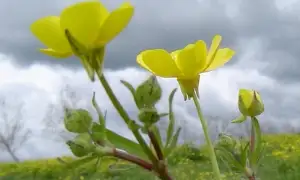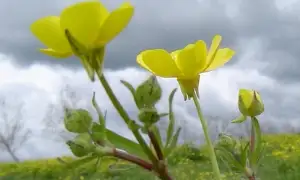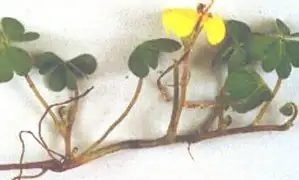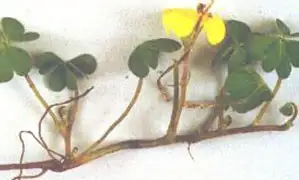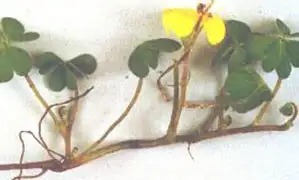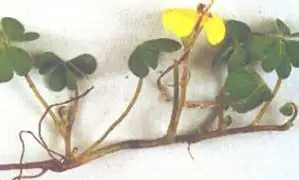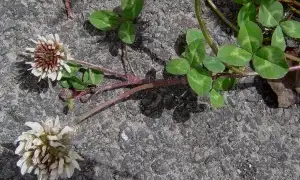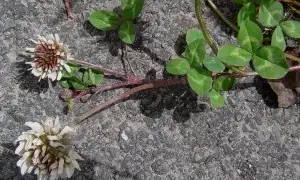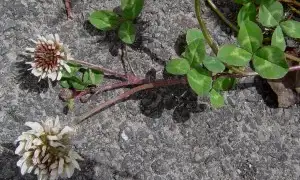Botanical name: Oxalis vallicola
Family name: Oxalidaceae
Overview

Pink shamrock.
Pink shamrock is one of the more troublesome oxalis species in New Zealand horticulture and is commonly confused with the very similar fishtail oxalis. It re-establishes from bulbs in spring after spending winter in dormancy. The sugars stored in the bulbs allow the foliage to be pushed up successfully through most mulches and through most residual herbicides.
It is most troublesome in flower gardens, where it is an eye sore and quickly covers freshly-weeded gardens with more foliage. It is also found in horticultural crops which use residual herbicides. As the oxalis is not affected by many of the residual herbicides, it thrives in the non-competitive environment created by these chemicals.
Note that pink shamrock is not thought to produce seeds, so all propagation is through the spread of bulbs, with dispersal often in the soil around transplanted shrubs.
A case of livestock poisoning was reported recently to Massey University caused by oxalates from the foliage of pink shamrock growing in pasture near a house where presumably garden rubbish containing bulbs of this species may well have been thrown over the fence, allowing pink shamrock to get established and thrive in the pasture. This resulted in the death of several cows.
Distinguishing features
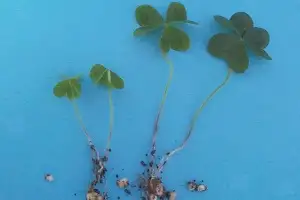
Pink shamrock leaves with three leaflets.
All oxalis species have leaves with three leaflets, and there is a distinct notch at the tip of each leaflet. As mentioned above, the pink shamrock is very similar to fishtail oxalis (Oxalis latifolia), which is another common oxalis species that causes similar problems to pink shamrock.
Leaves, stems, flowers and bulbs are all much the same, though the leaflets tend to be slightly more "fish-tail" shaped than in Oxalis vallicola. Both have a glassy white contractile root below the main bulb and have numerous small bulbils around the main bulb. Pink shamrock has whitish or very pale mauve-pink flowers, while fish-tail oxalis usually has slightly pinker flowers, whereas several other common oxalis species have yellow flowers, such as horned oxalis (Oxalis corniculata) and creeping oxalis (Oxalis exilis), both of which have stolons but no bulbs, and Bermuda buttercup (Oxalis pes-caprae), which flowers in winter.
Another oxalis species with pinkish flowers is lilac oxalis (Oxalis incarnata), but this has branched stems unlike pink shamrock and is more active in winter.
Just to be very confusing, there is another weed in NZ given the name of pink shamrock called Oxalis debilis, but this tends to be much less common than Oxalis vallicola, has slightly pinker flowers and has raised orange glands near the margins of the undersides of the leaflets.
Control

Pink shamrock growing in garden mulch.
Pink shamrock, as discussed above, is very difficult to kill. Glyphosate generally gives poor control because it is difficult to get sufficient herbicide into the bulbs and bulbils to kill them. This is the case for all translocated herbicides. It can re-establish through mulches and most residual herbicides.
Cultivation is particularly poor at controlling it as this simply spreads the bulbs, which are resistant to desiccation if they are left on the soil surface. However, constant mowing will kill it, removing the foliage consistently without allowing sugars to be sent back down to replace those which have been used.
The residual herbicide oxadiazon (sold in such products as Oracle and Weed Weapon Preventer granules) is also effective against it. Pink shamrock has problems penetrating black weed mat.
Similar species
Hairy buttercup
Hairy buttercup produces shiny yellow flowers and has sepals below the flower petals that point downwards.
